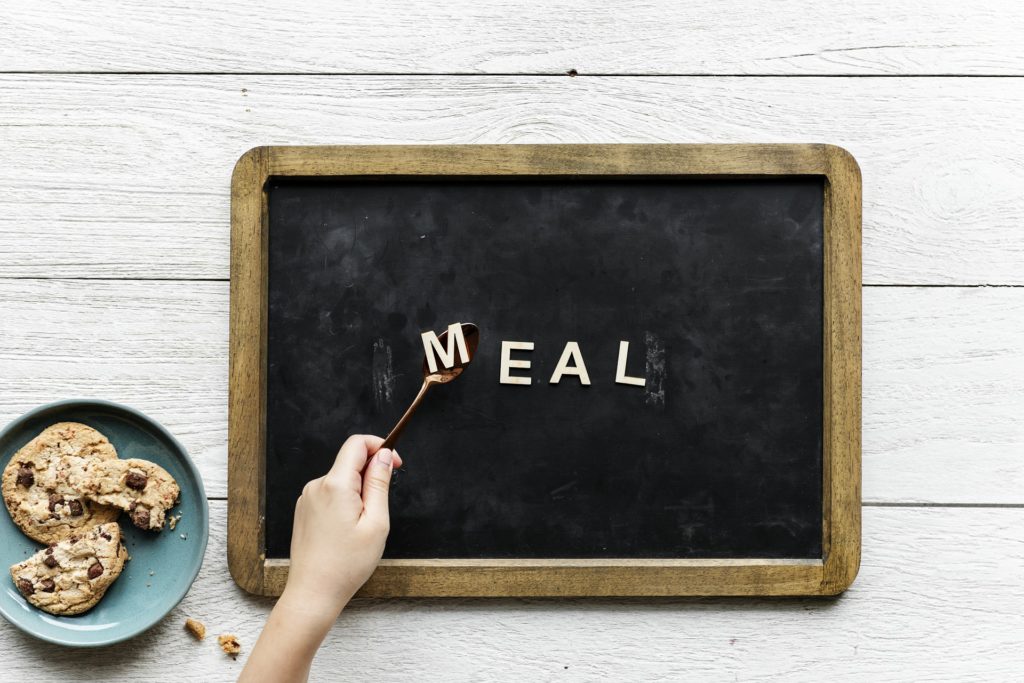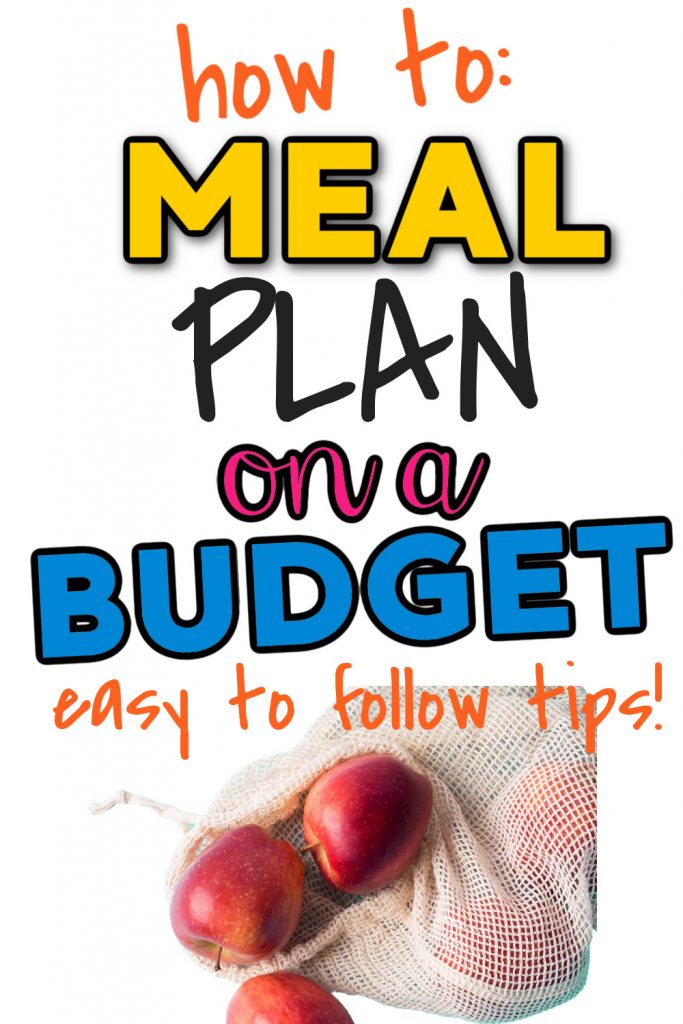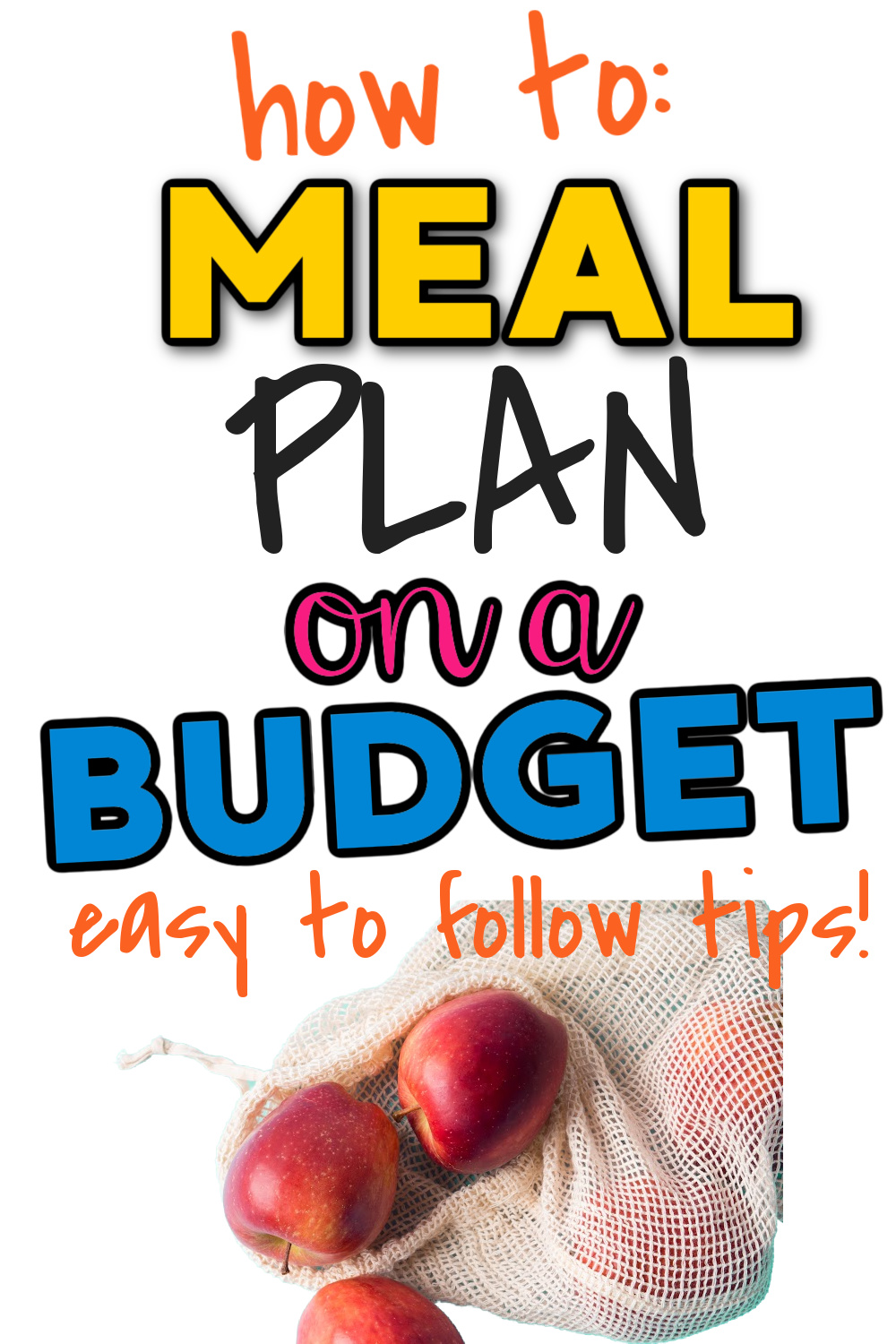We may earn money or products from the companies mentioned in this post.

HOW DO YOU START A MEAL PLAN ON A BUDGET?
You’re probably thinking that meal planning on a tight budget means eating rice and beans every day.
Boring, right?
While there’s no denying that rice and beans are good for the wallet you don’t have to sacrifice variety and taste just because funds are tight.
More than 7 years ago we were a family of 4 spending $50 a week on food with many weeks being even less than that. With an insanely picky husband and 2 small kids, I was determined to figure out ways to eat what we enjoyed without spending a ton.
These simple yet effective meal planning tips can make planning meals on a tight budget easier than you can ever imagine.
Check out some of my popular budget friendly weekly meal plans here
Use Meat As An Ingredient Not As The Main Dish
During our hardest financial years, I completely stopped making meals where meat was the main part of the dish.
Now, that isn’t to say we never enjoyed meat, we totally did but I started to use it differently than I ever had in the past.
Fried chicken was no longer a stand-alone dish. Fried chicken became crispy chicken salads, pasta, or wraps.
By using meat sort of like an addition to a meal and not the main focus you can easily use 50% less than you would if you had just served the meat with a side dish.
Eventually, as we got used to using less meat we started to incorporate meatless meals once or twice a week to help with buying less meat.
The trick to making meatless meals more enjoyable is to choose meals where the meat wouldn’t be missed or at the very least wouldn’t be noticed.
Keep in mind when replacing meat with additional vegetables that you choose vegetables that make sense to the meal. Adding beans to spaghetti would make it weird and unappetizing even if it was super cheap. While that is sort of an extreme example the key is to make it complimentary.
Some examples of excellent meatless meals are:
- Spaghetti (add additional veggies like mushrooms, bell peppers, onions, etc)
- Chili (chili has such a great flavor that it’s hard to tell if the meat isn’t there)
- Burrito Bowls (replace meat using Mexican rice, veggies, and beans)
- Homemade Pizza
- Soups
WANT TO REMEMBER THIS? PIN FOR LATER

Make Your Own Convenience Foods
It’s no secret that convenience isn’t cheap, but convenience food goes way beyond the frozen aisle at the grocery store.
You would be surprised how often we fill our pantries with items that we could easily make ourselves (for way less) without realizing how much money we are spending just by buying them.
Making your favorite pantry items doesn’t have to be a hassle either. You can make batches of your typical boxed items so that you can easily grab them when you need them without missing the convenience of it.
Make Recipes That Use Similar Ingredients
We’ve all made a recipe or two where we went out and bought a whole bunch of ingredients that we never ever used again.
Those spices, sauces, mixes, etc. eventually find their way into the trash after living in the cupboards for who knows how long. This is a huge money sucker!
To avoid this I keep staple spices in my cupboard at all times. You know those universal spices/sauces that almost any recipe will call for or that you know you will use on a regular basis.
You can use these basic spices together to create your own spice blends without having to buy jars of things you will only use once a year.
For instance, Italian seasoning is really just oregano, basil, rosemary, and thyme.
If you find that you never use Italian seasoning it wouldn’t make sense to buy a jar of it. By having those individual spices on hand you can easily make your own Italian seasoning as a recipe calls for it plus think about all the other possibilities you can whip up with those spices.
This can also go for any canned items like beans, tomatoes, etc. Creating recipes where you use similar ingredients time and time again will help you save money.
Double Your Favorite Affordable Meals
There is absolutely no shame in eating the same thing more than once. One of my favorite ways to save money meal planning is to double our go to affordable meals. Not only does it save me time from cooking it saves money from not having to cook a new meal every night.
If eating the same thing over and over doesn’t excite you then you can freeze half of it for a future week. There is nothing better than having prepared meals ready to go especially if some weeks are tighter financially than others.
Don’t Forget Your Leftovers
Just like leftovers can save you money when you use them they can also cost you money if you forget about them.
If you find yourself dreading using up your leftovers for dinner the next night here are a few tips to help make utilizing your leftovers easier.
- Use them for lunch the next day. As a stay at home mom I love having a home cooked lunch without the hassle of having to spend more time and money making cooking during lunch time.
- Leftovers are also great for people who work outside the home. My husband use to love bringing frozen dinners to work and eating them for lunch. While they are convenient they aren’t always filling and he would often be starving before the end of the work day. A starving husband and a long commute meant a lot of random drive thru trips or gas station snack purchases.
- Use leftovers to create new meals. If you absolutely hate the thought of eating the same meal again you can use your leftovers to create new dinners. Leftover Chili could be turned into chili dogs, Taco meat and toppings could be turned into nachos or taco soup. By creating new meals out of your leftovers you are still using them up without just throwing them in the microwave and calling it a day. Sometimes changing it up slightly can make all of the difference.
- If leftovers still aren’t your thing The best thing to do if you really really really don’t like leftovers is to cut your recipe so that you will not be left with any.
This takes a little practice but the more you do it you will figure out exactly how much your family will eat. By making exactly what you know you will use up you will not only save money by making less food but you don’t have to worry about any uneaten food going to waste.
